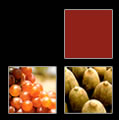
 |
 |
| PAYET Pisco
To go into Pisco Payet web site click here - www.piscopayet.com
Since the 1960’s Mr. Guillermo Payet, founder and General Manager of the Payet Corporation, has discovered, promoted and generally enjoyed pisco. In 1999, he decided to explore the world of pisco further. Payet decided to focus on Ica, known as ‘the birthplace of pisco’. The art of making pisco is a time honoured tradition. Payet’s production techniques are a testament to this art form. Deciding when to pick the grapes is a difficult and precise matter. Two factors need to be considered - as days go by and the grapes ripen their acidity decreases and their sweetness increases. The decrease in acidity creates better aromas while the increase in sweetness results in more alcohol in the wine. At first light, as soon as the grapes can be seen, the cutting begins. It is important to harvest the crop quickly before the sun burns the grapes. Early in the afternoon the load is delivered to the winery, where the harvesting crew unloads the bins into the stainless steel de-stemmer. The juice is then pumped into a holding 200 hectolitre stainless steel tank, kept cool by chilled water circulating through an internal coil called a ‘serpentin’. The following morning the must is pumped into a pneumatic press, which is a horizontal steel cylinder with narrow slots that rotates the contents, while gently pressing the grape pulp and skins as it separates the must it into another tank. Modern technology allows Payet to cool the grape juice, also called the “must”, in order to preserve the aromas of the grape skins and to allow a better fermentation process in a cool temperature. This is necessary in Ica, where the ambient temperature in the shade rises to 38 degrees Celsius. After about twelve days of fermentation, the natural sugars in the grapes are all converted into alcohol by the natural yeasts. The fresh wine is then pumped into the still and in about eight hours pisco is condensed into a tank at between 38 and 48 per cent Alcohol by volume. A key moment in the distillation is the “cutting” of the head and tail to separate them from the body of distillate, the pisco. As the temperature of the must rises, one of the first products that evaporate is methanol, a toxic substance that must be eliminated. The heart of the distillate is measured periodically for alcohol content. The heart is mixed with a clean paddle and a sample is taken. An alcoholmeter measures the percentage of alcohol content at ambient temperature. When the alcohol percentage by volume reaches the required level, the heart is immediately “cut” from the rest of the liquid coming out of the still, which is called the “tail”. Since alcohol is evaporated from the pisco, the oenologist must estimate a higher percentage to cut the tail so that the pisco reaches the desired percentage when bottled several months later. Vapours are condensed in a serpentine of decreasing pipe diameter and submerged in water for cooling. One of the secrets of Payet Pisco is that chilled water is pumped into the bottom of the cooling tanks so that the spirit produced is at a fresh temperature, thus avoiding the evaporation of aromas and making copper compounds precipitate into tiny solids that are easily filtered out. |
||
 |
||
